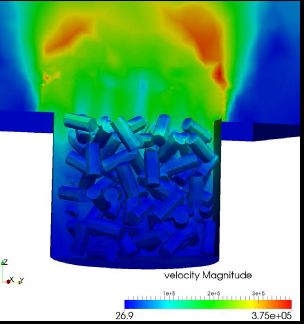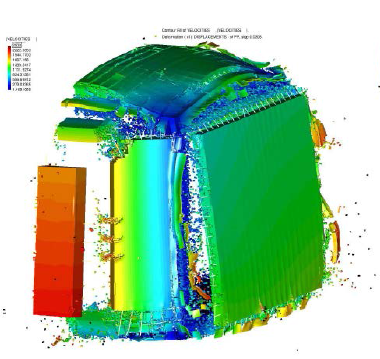Early announcement of MSIAC workshop in 2018 : Improved Explosives and Munitions Risk Management
MSIAC staff have started to put together the details of a workshop on “Improved Explosives and Munitions Risk Management” for 2018. This article describes the aim and goals of the workshop, which will be refined in the coming months. A key part of the preparation process is to gain input from the community on the proposal as well as to gauge the level of interest. Therefore, we would be grateful if after reading the article you would provide comments via the workshop and technical meetings questionnaire or directly to Martijn Van der Voort (m.vandervoort@msiac.nato.int).
Introduction
MSIAC is proposing a workshop in 2018 titled “Improved Explosives and Munitions Risk Management”.
This workshop seeks to exploit our improved understanding of munitions vulnerability and consequences to deliver improvements in munitions risk management.
The workshop will bring together stakeholders from the Hazard Classification (HC), Insensitive Munitions (IM), and explosives (storage) safety communities to develop a coordinated and optimised approach to managing explosives and munitions risk.
A secondary aim of the workshop is to initiate changes that will help realise the benefits of IM particularly during transportation and storage. The date and location are currently being determined.
Goals
The workshop will seek to achieve the following goals:
- Provide output to support the IM and HC harmonization initiative which seeks to standardize assignment procedures and institutionalise HC/IM harmonization
- Exploit scaled testing and modelling to facilitate quantitative assessment methodologies
- Develop improved methodologies to allow risk to be managed with sufficient granularity so that benefits from IM can be realised whilst munitions presenting greatest hazard can be more efficiently managed
- Review and make recommendations with respect to updating standards used to manage explosive and munitions risk
- Ensuring they reflect the changing nature of the munitions stockpile.
- Balancing ease of application for the users vs. the complexity
A review of the appropriateness of current policy and standards managing risk will be a major benefit of this workshop.
Areas to be addressed
We plan to address the following five areas in the workshop:
- Improved HC and IM Assessment: Exploitation of All Available Evidence
HC and IM assessment often involves a limited number of tests and small quantities of ammunition. Storage of ammunition and explosives typically takes place at a larger scale and possibly with more confinement. The workshop offers an opportunity to expand the assessment to include all available evidence and update the methodology used to assign the Hazard Classification.
-
Improved HC and IM assessment: Revised Criteria for HD assignment
The current system used to assign HC for explosives and munitions loosely defines explosive effects (e.g. thermal, projection/explosion, mass explosion) which can lead to differences in assignment of HD between nations. This will be addressed as part of the effort to harmonize HC and IM, it is proposed that criteria used to assign HD to military explosive articles make use of the response descriptors referred to in AOP-39 and UN TS7.
- Improved HC and IM Assessment: Revised Hazard (sub) Divisions
The current HC system with its Hazard (sub) Divisions may not be ideally representing the risk posed by the changing nature of the munitions stockpile.
The workshop offers the opportunity to discuss a possible revision of Hazard (sub) Divisions, compatibility groups and aggregation rules. This could allow a better representation of the risk, thereby introducing additional options and flexibilities, particularly for storage at operational levels.
- Improved Quantification of Consequences and Risk
Current standards for Quantity Distances (QDs) and risk analysis (AASTP-1, AASTP-4 and AASTP-5) have their limitations. They are primarily based on experimental data and models for (mass) detonations and thermal effects. As a result there is a mismatch with the finer granularity offered by response descriptors used for HC and IM assessment. This disconnect makes it difficult to recognize the benefits of IM in many cases.
The workshop offers the opportunity to determine what experimental data and models would be required to quantify the consequences and risks based on the response descriptors, in particular for munitions responses “deflagration”, and “explosion”. It is essential to include the effects of scaling, confinement and venting in the discussion. Some modelling efforts are shown below.

US research effort 2017: Modelling of propellant combustion (left) and detonation in ammunition magazine (right) by Applied Simulations, Inc (ASI). Presented by R. Conway and Dr. J. Covino at the AASTP-4 Working Group meeting, Kolsas, Norway, 25-27 April 2017.
- Improved Explosives and Munitions Risk Management
The workshop will offer the opportunity for a reappraisal on how risk should be managed during storage, transport and operations, taking into account the changes discussed and proposed in the above areas. It presents an opportunity to develop best practices for managing munitions safety throughout the lifecycle; where a simplistic approach should be complimented or replaced by more quantitative tools an assessment. Areas and issues to be addressed would include:
- An increased granularity and detail in the quantification of consequences and risk could lead to more complex QD tables and risk methods. As a result the introduction of computer-based tools into the standards could be considered.
- In some cases assumptions made in standards prohibit more detailed risk assessment. Currently AASTP-5 requires that all munitions are to be aggregated as HD1.1 in order to keep its application simple. This assumption should be changed to enable recognition of the benefits of IM and focus efforts on munitions which present the highest risk.
- Consequence and risk analysis could not only become more complex but also more munitions specific. The possibility to address risk at the munitions level will be discussed.
- Development of a holistic approach considering the cost and benefits of using more quantitative assessment methods vs. simplistic conservative assessment methods.
Workshop Results
The envisaged results of the workshop are:
- Revised approach to munitions hazards and risks in light of development and introduction of IM.
- Improved Quantitative Risk Assessment.
- Improved understanding of the true nature of hazards and risks and how this can improve ownership and associated costs.



